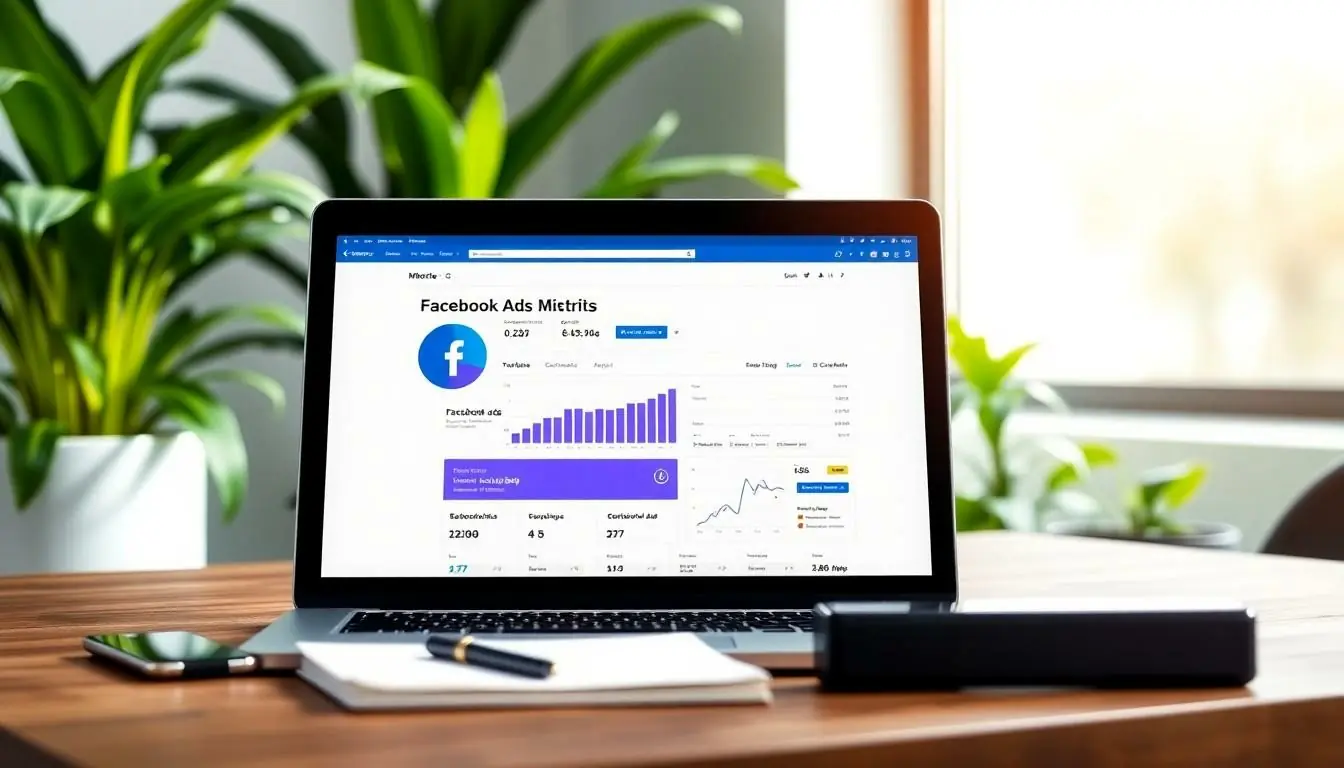Table of Contents
ToggleIn the wild world of social media marketing, Facebook ads can feel like a rollercoaster ride—thrilling, a bit scary, and definitely not for the faint of heart. With billions of users scrolling through their feeds, businesses are eager to grab attention, but at what cost? Understanding Facebook ads cost is crucial for anyone looking to make their mark without breaking the bank.
Imagine trying to buy a car without knowing the price tag. It’s a bit like diving into Facebook advertising without a grasp on costs. From budget-friendly options to premium placements, knowing what to expect can turn that daunting leap into a strategic step. So, buckle up as we navigate the ins and outs of Facebook ads costs, helping businesses make informed choices while keeping their wallets intact.
Understanding Facebook Ads Cost
Understanding the costs of Facebook ads involves examining several factors that influence pricing and exploring various pricing models available for advertisers.
Factors Influencing Cost
Targeting options play a significant role in determining ad costs. When advertisers select narrow audience segments, costs may increase due to competition. Ad placement also impacts expenses; options include the news feed, stories, or third-party apps. Time of year can affect pricing, with higher demand during holidays or events leading to elevated rates. Additionally, ad quality matters. Facebook rewards well-performing ads with lower costs through its ad auction system. Campaign objectives, such as brand awareness or conversions, further influence overall expenses.
Pricing Models Overview
Advertisers encounter several pricing models on Facebook, mainly cost-per-click (CPC) and cost-per-impression (CPM). With CPC, businesses pay when users click their ads, making this model ideal for driving traffic. Conversely, CPM charges advertisers for every thousand impressions, suitable for enhancing visibility. Beyond these, cost-per-action (CPA) charges when a specific action occurs, like a purchase or sign-up. Each model comes with distinct advantages, allowing businesses to choose based on their unique goals and budgets. Careful analysis of these options ensures effective allocation of advertising funds.
Average Cost of Facebook Ads
Understanding the average costs of Facebook ads helps businesses budget effectively. Costs vary significantly based on multiple factors, including advertising strategies and target audiences.
Cost Per Click (CPC)
Cost per click (CPC) represents the amount advertisers pay each time a user clicks on their ad. On average, CPC ranges from $0.50 to $2.00, depending on the industry. Industries with higher competition, like finance and travel, often see costs exceeding $3.00. Advertisers benefit from tightly tailored targeting to lower CPC. Strong ad performance and relevance can also lead to CPC discounts, as Facebook rewards effective ads by lowering costs.
Cost Per Impression (CPM)
Cost per impression (CPM) refers to the amount spent per thousand impressions of an ad. Average CPM values fluctuate between $5.00 to $12.00, influenced by factors like ad placement and audience segmentation. Competitive industry niches tend to drive up CPM rates. Advertisers can leverage A/B testing to optimize their campaigns, identifying which ad formats yield the best effectiveness at lower costs. Strategic placement choices, such as using the Facebook Stories format, may further decrease CPM.
Cost Per Action (CPA)
Cost per action (CPA) denotes the cost incurred when a specific action is completed, like a purchase or sign-up. CPA costs typically range from $5.00 to $30.00, heavily influenced by the desired action type. Industries offering high-value products often experience higher CPA due to increased competition. Focusing on ad quality can improve conversion rates and lower CPA. By optimizing the sales funnel and user experience, advertisers can achieve more cost-efficient actions while maximizing return on investment.
Strategies to Optimize Facebook Ads Cost
Effective strategies exist to enhance the efficiency of Facebook ads while managing costs. Two critical areas are targeting the right audience and improving ad quality.
Targeting the Right Audience
Selecting the optimal audience directly impacts Facebook ad costs. Narrow audience segmentation often increases competition, which can elevate expenses. Leveraging Facebook’s detailed targeting tools allows advertisers to identify specific demographics, interests, and behaviors that align with their goals. Implementing custom audiences based on previous interactions or using lookalike audiences can also drive costs down. Higher relevance means better performance, leading to lower costs per click or impression. Constantly refining audience parameters through testing ensures budget allocations yield maximum results.
Ad Quality and Relevance
Ad quality plays a pivotal role in determining Facebook’s ad costs. The platform rewards ads that demonstrate high engagement and relevance with lower prices. Improving text, visuals, and overall messaging increases the likelihood of achieving better performance. Maintaining consistency between audience expectations and ad content is crucial. Frequent A/B testing allows businesses to identify elements that resonate most, optimizing effectiveness. Enhancing relevance scores correlates with reduced costs, providing an efficient pathway to maximizing return on investment. Investing time in crafting compelling and relevant ads ultimately pays off in budget management.
Budgeting for Facebook Ads
Establishing a budget for Facebook ads involves careful consideration of various factors. Businesses must evaluate their marketing goals alongside the costs associated with different ad models.
Setting a Realistic Budget
Setting a budget begins with determining overall marketing expenses. Allocating between 5% to 10% of total revenue often provides a solid baseline for ad spending. Assessing competition in your industry helps identify average CPC and CPM rates, guiding budgetary decisions. Incorporating flexibility into the budget allows adjustments based on performance metrics, especially during peak seasons. Establishing specific goals for each campaign can clarify necessary financial commitments, enhancing overall ad effectiveness. Adjustments should reflect data-driven insights, ensuring sustained return on investment.
Monitoring and Adjusting Spending
Monitoring ad performance continuously ensures alignment with business objectives. Utilizing Facebook Ads Manager enables real-time tracking of spending relative to budget allocations. Regular analysis of key performance indicators helps identify underperforming campaigns, prompting potential budget reallocation. Adjustments to audience targeting can lead to cost improvements, allowing for efficient use of funds. Incremental increases in ad spend may boost visibility for high-performing ads while minimizing risk. Proactively managing budgets fosters better outcomes, keeping expenses in line with long-term marketing strategies.
Conclusion
Navigating the costs of Facebook ads requires a strategic approach. By understanding the various pricing models and factors influencing expenses, businesses can make informed decisions that align with their marketing goals.
Focusing on audience targeting and ad quality can lead to more efficient spending and improved returns. Regularly monitoring performance and adjusting budgets based on insights ensures that advertising efforts remain effective over time.
With the right strategies in place, businesses can harness the power of Facebook advertising while keeping costs manageable.







